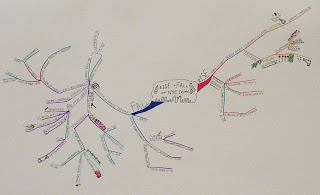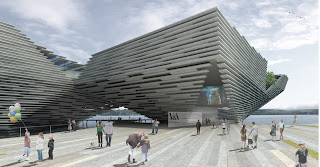For our third Design Studies Assignment we were asked to identify useful resources on our topic from Assignment two. The topic I have looked further into is Crime; the different causes of crime, how design effects crime and how a bad environment can increase crime. I found a selection of useful books and journals using the Dundee University library and their Cross Search website. I have produced a bibliography of these texts below.
Altman, Irwin. (1975) ‘The Environment and Social Behaviour’. Wadsworth Publishing Company, Inc.: Belmont, California.
This book analyses the concepts of privacy, crowding, territory and personal space in humans. Altman examines how people are affected by the physical environment and how this shapes their social interaction with others. This is a book I’d like to look more closely at. It discusses that people are attracted to commit crime if design isn’t distinctive enough. The ideas in this book can be used as guiding principles in environmental design.
Belfield, Clive, R. and Levin, Henry, M. (2007) ‘The Price We Pay: Economic and Social Consequences of Inadequate Education’. The Brookings Institution: Washington D.C.
Belfield and Levin examine the costs of investing in good education and the costs of not doing so. They write that educational attainment is one of the most important determents of how a child’s life will turn out. It will affect their employability, income, health, housing and their social status to name a few. I found this text useful as it talks about crime and where it might stem from. Bad education may be the root or the beginnings for someone who turns to crime.
Box, Steven. (1987) ‘Recession, Crime and Punishment’. The Macmillan Press Ltd.: Basingstoke, Hampshire.
This book discusses why recession may cause crime and confirms this with evidence. It states that income inequality results in crime and social policies must aim to reduce inequality to reduce crime. This text would back up my thoughts from assignment two that the recession, inequality and social status affects whether or not someone will commit crime.
Dahlberg, Matz and Gustavsson, Magnus. (2007)’ Inequality and Crime: Separating the Effects of Permanent and Transitory Income’. Blackwell Publishing Ltd and the Department of Economics: University of Oxford.
This paper was written to show the effects transitory income and permanent incomes have on crime. Dahlberg and Gustavsson have broken down income into two parts (transitory and permanent) as most other papers just look at income as a whole. They did this as they feel permanent income effects crime rates more that transitory income, as an individual’s permanent position in society is the main factor in whether or not they will commit crime.
Fowler, E.P. (1987) ‘Street Management and City Design.’ Social Forces, vol. 66, no. 2, pages 365-389.
Fowler discusses and tests some of Jane Jacobs’s ideas about how the physical diversity in cities encourages neighbours to relate to each other, discouraging crime. Fowler wants to show that our cities today lack diversity and are almost inviting crime. Jane Jacobs was a writer and an activist her primary interest was in communities, urban planning and decay. This journal again links with the topic of our environment changing how we act.
Hensworth, Simon. (2008) ‘Designing to Prevent Crime: Crime Prevention through Environmental Design.’ Architecture Australia, vol.97, issue 2, pages 111-112.
This article is about crime prevention and how projects would be more successful when security needs are considered at the beginning of the design process and not added after. It is based on embedding safety and security into the built environment. It discusses natural surveillance, territorial reinforcement and natural access control. This would be helpful when trying to decrease crime as it suggests ways of changing the environmental surroundings to deter criminals. I found this article very interesting.
Roncek, Dennis, W. (1981) ‘Dangerous Places: Crime and Residential Environment.’ Social Forces, vol.60, no. 1, pages 74-96.
Roneck looks at how characteristics of a residential area in the city affect where crimes occur. The text gives an understanding of the reasons for a rise in crime. He shows the variance in crime depends on opportunities provided by the social and physical different ion of the city.
I’ve composed a list of the top websites I like to check to keep up with developments in Interior and Environmental Design:
http://www.apartmenttherapy.com/
An american website/blog. Good to look at for inspiration with interior design in general and furniture design. I like this website because there's always something different and a little quirky.
http://www.designboom.com/eng/
This website was introduced to me by one of my tutors. It features design, architecture and art. Some things on the website are quite crazy and out there. I like that it's not ordinary, it's fun and encourages to think outside the box.
http://www.digsdigs.com/
A home design website but not your average home design website. The objects shown on this site are everyday objects with a twist. Inspirational.
http://www.thesocietyofbritishinteriordesign.org/
We had a talk last year from someone from the Society of British Interior Design to encourage us to become members. As I am a budding British Interior Designer I'm looking into this and like to see how the society is progressing.
Also a list of top websites to keep up to date with goings on in the world in general:
http://www.bbc.co.uk/iplayer/
BBC iplayer is good for catching up on radio 4 programmes and any television programmes that are useful, whether it's the news or a programme about design.
http://www.bbc.co.uk/news/
A reliable website to keep up to date with world news.
http://www.guardian.co.uk/
I prefer this website to the BBC news website for some reason, I think I prefer the layout. Again I use it to keep up to date with world news and other stories that catch my eye.
http://news.sky.com/skynews/
This website allows you to watch sky news live which is useful for keeping up to date with the news as it happens.
















